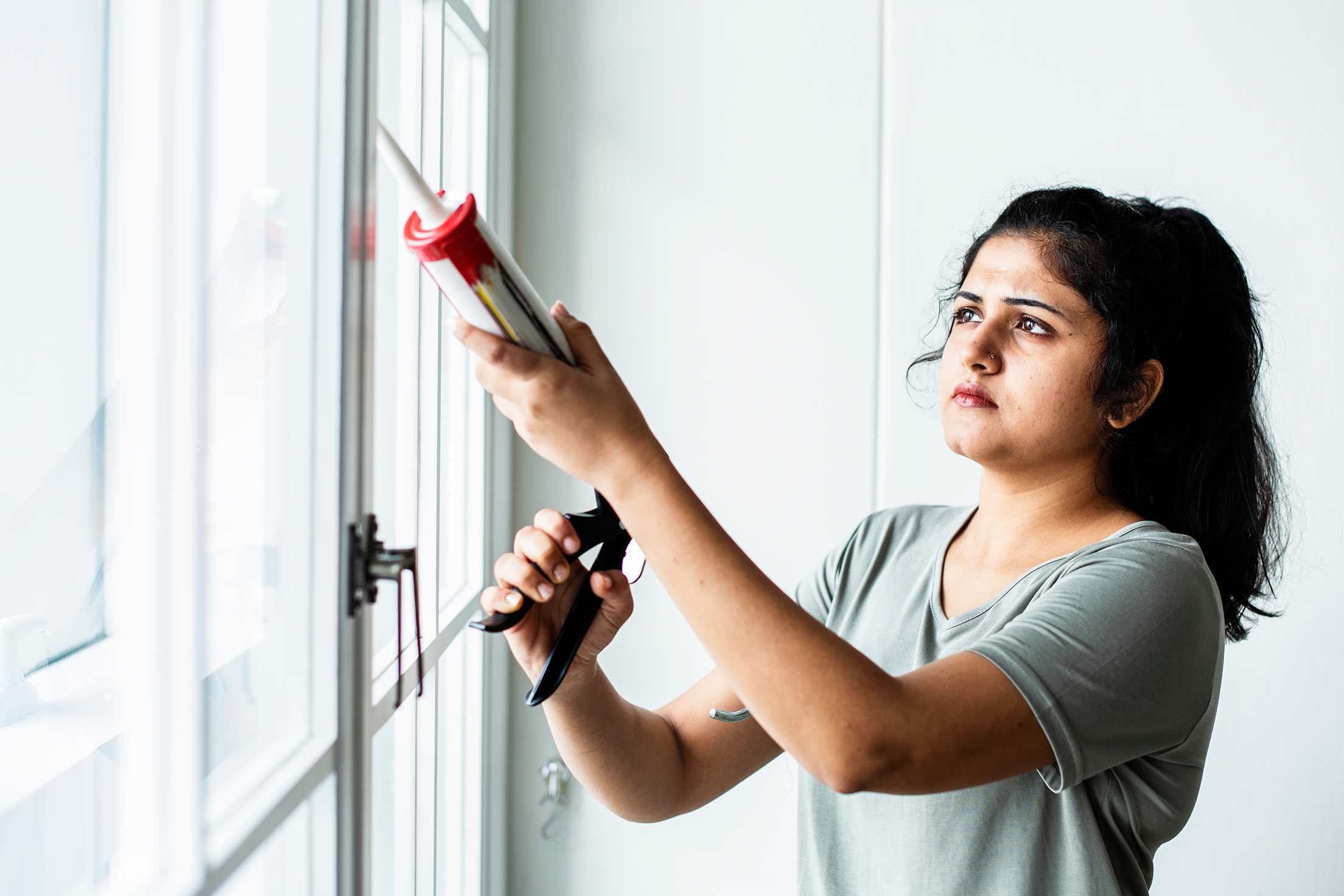
How to Keep Pests Out of Your Home
Prevent mice, ants, bedbugs, and more.

All sorts of critters—cockroaches, ants, mosquitoes, rodents, and more—are eager to make their way into your home. But these uninvited house guests can be more than just an irritation. Pests can carry and spread disease and trigger health problems, such as asthma or allergies.
“Pests need three main things: food, shelter, and water,” says Brittany Campbell, a staff entomologist with the National Pest Management Association. Often, homes present abundant options for pests to get their needs met—food can be found in the kitchen and living room, comfortable interiors can be all too welcoming, and water can drip, leak, or collect from fixtures and condensation.
Fortunately, these simple, effective strategies from experts can help make your home less inviting to rodents and insects all year round.
Keep things clean.
The first tip is the simplest, although it requires regular attention: Clean up after yourself, particularly when it comes to food. Just a few simple steps, such as wiping down the counters after cooking and washing dishes instead of letting them soak overnight in the sink, will make your home less attractive to pests.
- Clean your kitchen nightly. Do the dishes, put away food, and wipe down the counters. You’ll also want to make sure that garbage cans or compost bins in the kitchen are tightly sealed and that recycling is clean before going into the bin.
- Reduce clutter. That includes papers, cardboard boxes, piles of clothing, and so on.
- Be thoughtful with pet food. Kibble and other pet food can easily attract and sustain pests. Store bags of dry pet food in an airtight container, and consider only having food bowls out during mealtime. Don’t leave bowls of food outside overnight.
- Properly store food. Pantry pests—such as tiny beetles and moths—adore flour, grain, and cereal, notes Campbell. Entry is easy when these foods are in their original packaging. Decant items into airtight containers to prevent pantry pests from gaining access or spreading from one item to its neighbor.
- Deep clean monthly. Crumbs and moisture may lurk behind the fridge and dishwasher. “That provides pests with darkness, water, and food,” says Joshua Foster, executive director at Zap Termite and Pest Control. Take the time to vacuum and clean in these spots, and any areas where you often eat, such as your dining table or couch.
Remove moisture.
Moisture creates a friendly environment for pests, says Campbell. That includes termites, carpenter ants, mosquitoes, roaches, and many others. Reduce the moisture, and you’ll make your home less inviting.
- Eliminate moisture outside. Check gutters to make sure they’re not clogged, and clean them out if they are. Make sure drain spouts are aimed away from your home, and cut down on standing water in your yard (think: the kiddie pool, a bird bath, or plant saucers). “Anything that’s overturned and can collect water, even [if it’s] the size of a bottle cap, can breed mosquitoes,” says Campbell.
- Look for moisture within your home. A small leak from the garbage disposal might be hard to spot, but it can be attractive to cockroaches or other pests, Foster points out. Check for leaks, dripping faucets, and other sources of moisture and fix them. If your home shows signs of being moist in general—such as a musty smell or condensation on windows—consider running a dehumidifier.
- Run the bathroom fan. Taking a shower leaves behind residual moisture. Turn on the fan before you get in, and leave it on until the water is off and the steam has fully cleared. Make sure any other humid areas, such as the kitchen or laundry room are well ventilated.

Seal up holes.
Pests don’t need much space to get into your home. A small hole in a window screen is an easy entry point for insects, while mice can squeeze through a hole as small as a nickel, according to the CDC.
- Look for holes. Walk around the exterior of your home and look for ways pests could get in. Pay particular attention to the foundation and any spot where plumbing or air vents exit the wall. Follow the same process inside, looking for holes in screens, cracks in the wall, and so on. Check around pipes, under cabinets, around floor and wall vents, and in the attic and basement.
- Fill in holes. Once you’ve identified potential entry points, eliminate them. Use caulk to fill in cracks and holes around utilities and pipes, says Campbell. With bigger holes, or if you’re wary of rodents, place steel wool or rubber mesh around the area before caulking it up, she says. For larger holes, you can also use metal sheeting or cement to seal it up.
- Install door sweeps and weatherstripping. If you can see light around a door or window, that's an indicator that you've got gaps that could allow a pest through, says Foster. Attach door sweeps, which are available at home improvement stores, to the bottom of the door to fill in the gap between the door and the threshold. Add or replace weatherstripping around windows and doors.
- Examine and replace screens. Over time, holes and tears can develop in screens. Take a look at yours, and repair or replace as necessary.
“The goal is to make the environment hard to access,” says Foster—that'll encourage pests to reside elsewhere.

Keep a keen eye out for hitchhikers.
Bedbugs, ticks, and ants can be inadvertently carried into your home. “As a society, we haven’t developed a way to prevent bed bugs from traveling from one place to another and infesting a new place,” says Foster. These hitchhikers travel on luggage and used furniture, according to the Environmental Protection Agency. Sharp observation skills—particularly at spots where people gather, such as hotels and movie theaters—can help you be aware of their presence, says Foster.
- Inspect delivered packages. The EPA recommends checking packages for pests before bringing them inside.
- Check for signs of bed bugs when traveling. When you arrive at a hotel, place your luggage on the bathroom's tiled floor. Unlike the carpeted floor or bed, this is a “highly unlikely place for bedbugs to be,” Campbell says. Then, pull back the sheets so you can check the mattress and box spring for signs of bedbugs, which include live bugs (which are about the size of an apple seed), fecal stains, and shed skin, says Campbell. If you find evidence, request another room. Once you return home, examine your luggage for signs of bed bugs before bringing it into your home.
- Put an allergen-proof mattress cover on your bed at home. “Mattress wraps are very efficient,” says Foster. They prevent bugs from getting comfortable in the mattress and seal off any existing bugs, he says. If the cover is a light color, it will also help make bed bugs easier to spot. Plus, these fabric covers can prevent dust mites—which can cause allergies—from forming a colony in your bed.
- Inspect secondhand furniture and clothing. Before bringing used items into the home, check for signs of bedbugs, termites, and ants, such as the presence of the insects, fecal stains, or holes or damage in the wood. Use high heat to dry secondhand clothing when possible to ensure that you kill any bed bugs.
- Inspect yourself—and pets—for ticks after being outside in grassy or woody areas (potentially including your own yard). Check your clothing, backpack, and body for ticks and remove any that you find. Inspect your dog for ticks after walks as well—focus on looking around the ears, eyelids, and tail; between the hind legs; under the front legs and collar; and between the toes, advises the CDC.

Take care outside.
The outdoors is home to many of the same pests that seek entry to your home. When you’re barbecuing or having a drink on your patio, the last thing you want is a parade of rodents and bugs.
“There are plenty of insects—good and bad—outside, so it’s going to be hard to prevent interacting with any pests while you’re outdoors,” says Campbell. Still, there are ways to cut down on ants walking across your plate.
- Use pest-proof outdoor garbage cans. If your cans are easy to open, animals will feast on your scraps. Opt for animal-proof options, and don’t let trash spill or overflow.
- Apply repellent. Use an EPA-registered repellent to keep mosquitoes from nibbling on you.
- Be smart about food. You can eat and relax outside without providing a tempting meal for bugs. Cover food during meals, and keep a lid on any sugary drinks. “As soon as you’re done eating, don’t let the food sit around,” says Campbell. “Take everything indoors to prevent pests from being attracted to your barbecue area.” Sweep up crumbs and wipe down the table and chairs, too.
- Keep an eye on your landscaping. Mow the lawn regularly and keep plants around the house, and anywhere you like to lounge, trimmed back. Trees and bushes can create a bridge into the house, Campbell says. By maintaining landscaping, you’ll reduce the chances of entry into your home and cut down on insects congregating on your patio.